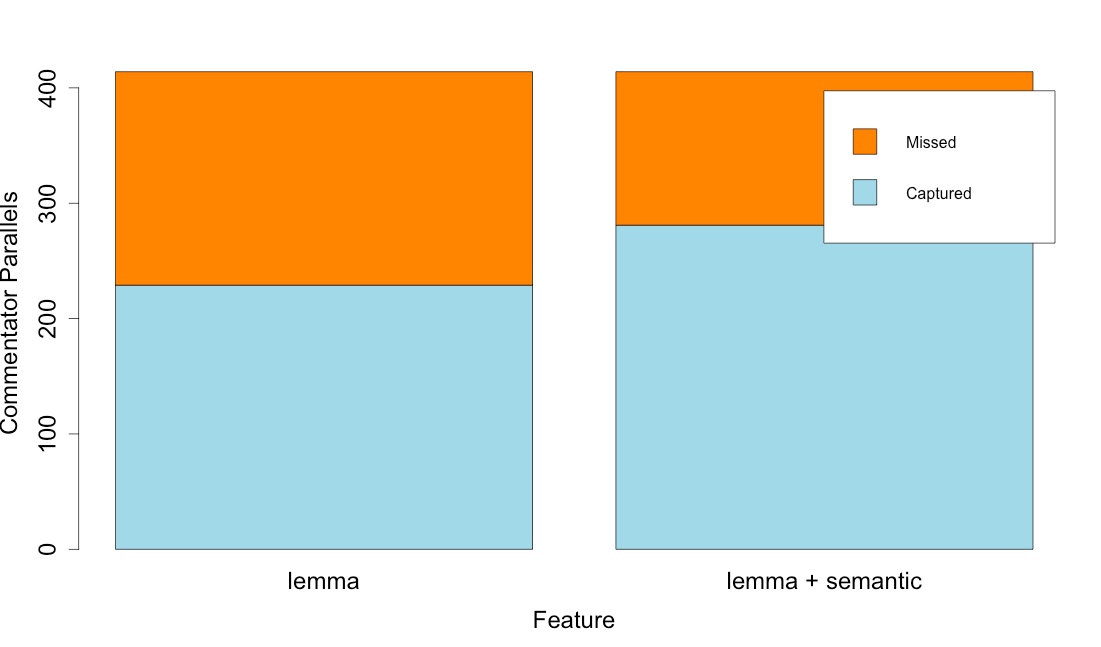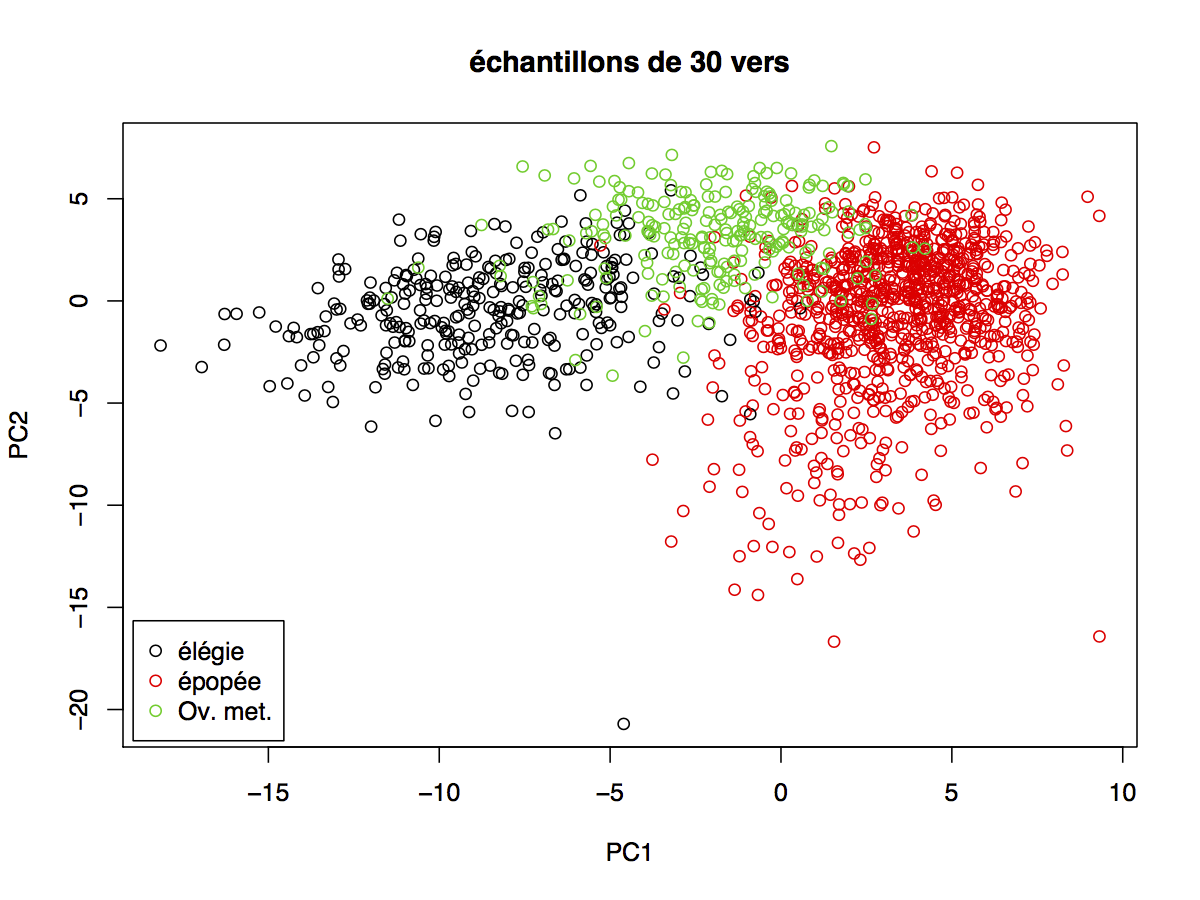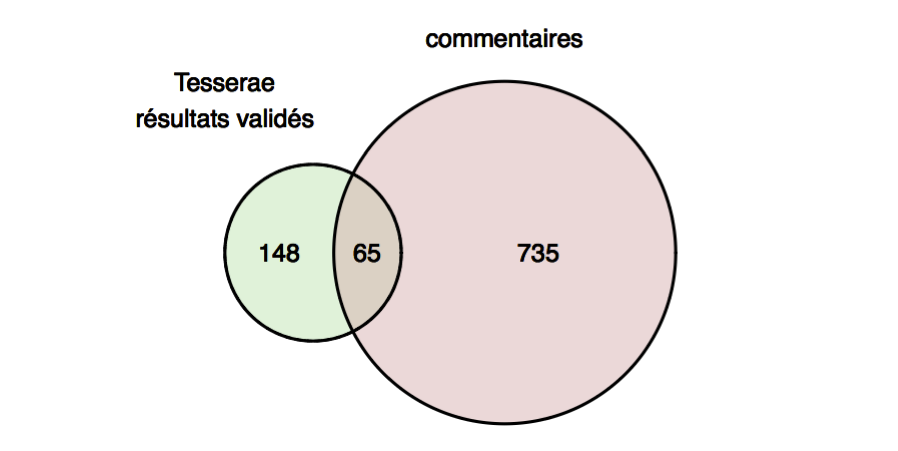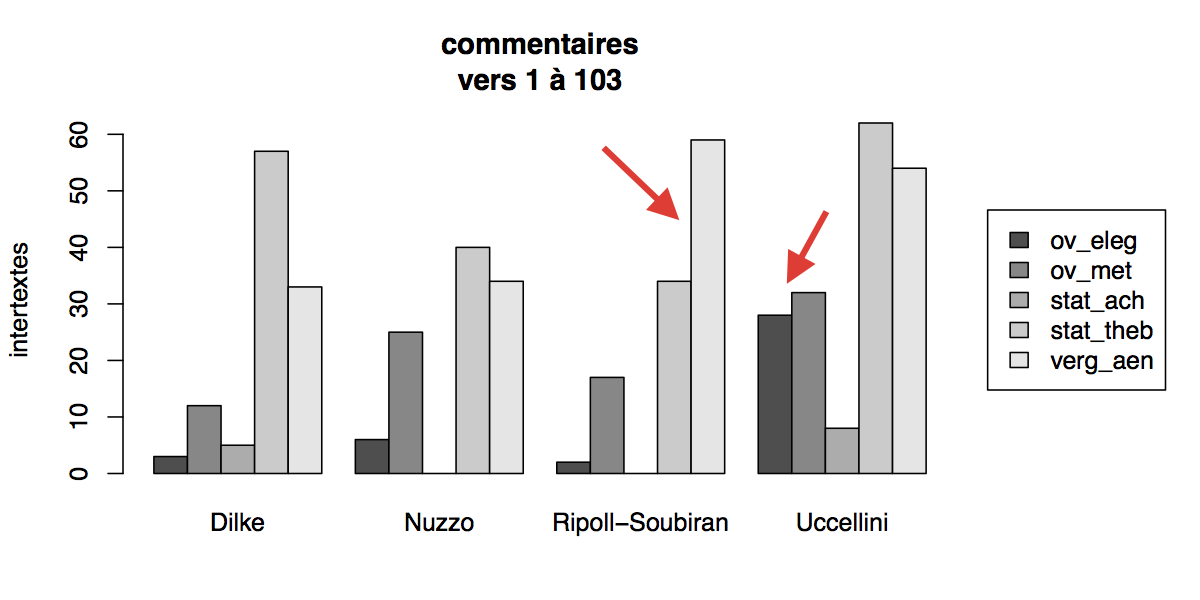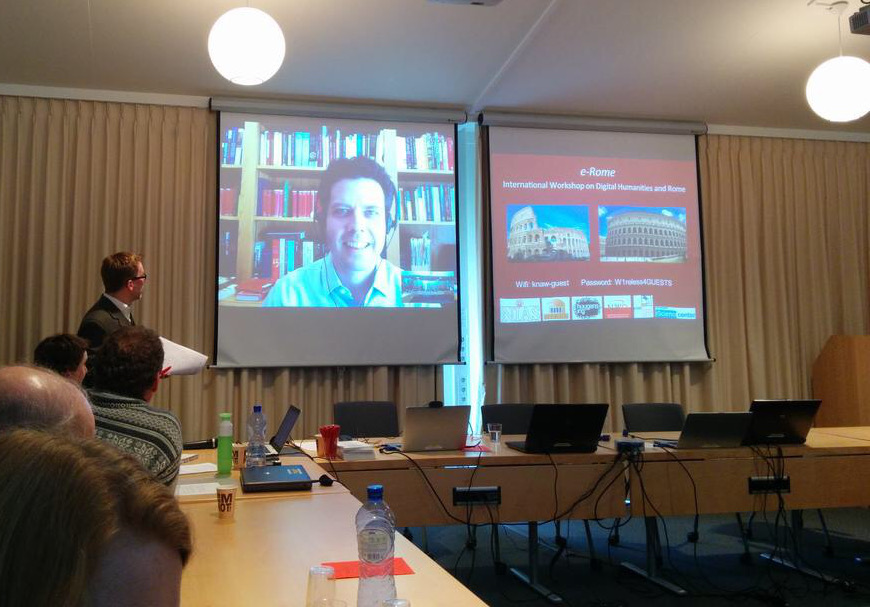As mentioned in previous posts, the Tesserae team has been working to create a digital Greek to Latin dictionary to aid in the retrieval of cross-language text reuse. Tesserae interns Nathaniel Durant, Theresa Mullin, and Elizabeth Hunter collectively assessed 1,000 Greek words, determining which, if any, method for producing a cross-language dictionary produced accurate translations. The winner proved to be an enhanced version of Chris Forstall’s topic-model-based ‘pivot’ method.
I crunched the numbers we got from the 1,000 translations tested by our faithful collaborators, and used them to generate the best possible Greek-to-Latin dictionary. Chris’s algorithm produced up to two Latin translations for each Greek word, with a similarity value attached to each translation. I set out to find a good ‘cutoff’ value for the probability of a translation. I balanced precision and recall according to the following criteria:
- It was very important to us that we retain at least 1 accurate translation.
- It was very important to us that we avoid retaining inaccurate translations.
Because we have two possible translations for most words, it proved best to use two different similarity-score cutoffs for translations A and B. The result is a Greek-to-Latin dictionary which correlates 34,000 Greek words with at least one semantically related Latin word. We have reason to believe that this dictionary is accurate at at rate of 75%-80%, according to our own parameters for accuracy (because we are searching for allusions, this is not a ‘translation’ dictionary; we consider antonyms and all other metonyms to be valid associations).
Publications on our methodology are forthcoming. For now, please experiment with the tool at http://tesserae.caset.buffalo.edu/cross.php. We welcome your feedback.

